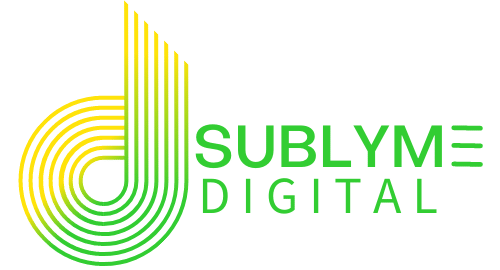What’s Next in Website Speed: Technologies and Strategies
Key Takeaways
- Emerging Technologies: Uncover new tools and techniques that are revolutionizing website speed.
- Strategic Approaches: Learn how to implement these trends to stay ahead of the competition.
- User Experience: Understand the impact of speed on user satisfaction and engagement.
In today’s fast-paced digital world, website speed is more crucial than ever. As technology evolves, so do the methods to enhance website performance. This blog explores the future trends in website speed optimization, focusing on emerging technologies and strategies that promise to make websites faster and more efficient.
The Rise of 5G
5G technology is set to transform how we experience the internet, offering significantly faster download and upload speeds. This means websites can deliver high-quality content without the delays associated with previous networks. For businesses, this is an opportunity to enhance user experience by optimizing their sites to fully leverage 5G capabilities.
Example:
- Use Case: Implement high-resolution images and videos without compromising load times. For instance, an online retailer can showcase 360-degree product views or interactive videos, providing a richer shopping experience.
- Optimization Tip: Ensure your website’s backend is ready to handle increased data flow by optimizing server response times and using content delivery networks (CDNs).
5G is not just a speed upgrade; it's a game-changer for online experiences.
AI and Machine Learning
Expansion: AI and machine learning can significantly boost website speed by analyzing user behavior and optimizing content delivery. These technologies can predict what users are likely to do next and preload content accordingly, reducing perceived load times.
Example:
- Use Case: Implement predictive loading on an e-commerce site. If a user frequently visits a particular category, the site can preload images and details of products in that category.
- Optimization Tip: Use machine learning algorithms to analyze traffic patterns and adjust server resources dynamically, ensuring optimal performance during peak times.
Progressive Web Apps (PWAs)
Expansion: PWAs provide a seamless experience by combining the best features of web and mobile applications. They load quickly, even on slow networks, and offer offline access to content, making them ideal for users with intermittent connectivity.
Example:
- Use Case: A news website can use PWAs to allow users to read articles offline. This ensures that users can access content anytime, increasing engagement and retention.
- Optimization Tip: Implement service workers to cache essential resources, enabling the PWA to function offline and load instantly on subsequent visits.
Edge Computing
Expansion: Edge computing processes data closer to the user’s location, reducing latency and improving load times. This approach is particularly beneficial for applications that require real-time data processing.
Example:
- Use Case: A gaming platform can use edge computing to deliver real-time updates and interactions, enhancing the gaming experience by minimizing lag.
- Optimization Tip: Deploy edge servers in strategic locations to ensure data is processed near users, reducing the time it takes for data to travel across the network.
HTTP/3 and QUIC Protocol
Expansion: HTTP/3 and the QUIC protocol are set to revolutionize data transfer by improving connection reliability and reducing latency. These protocols offer faster and more secure data transmission, enhancing overall website performance.
Example:
- Use Case: A video streaming service can adopt HTTP/3 to provide smoother streaming experiences, reducing buffering and improving video quality.
- Optimization Tip: Transition your website to HTTP/3 to take advantage of its faster connection setup and improved data transfer speeds.
Image and Video Optimization
Expansion: Emerging image and video formats like AVIF and WebP offer superior compression, allowing websites to deliver high-quality media without slowing down load times. Optimizing media is crucial for maintaining speed, especially on content-heavy sites.
Example:
- Use Case: A photography portfolio site can use AVIF images to showcase high-quality photos while maintaining fast load times.
- Optimization Tip: Use responsive images and adaptive bitrate streaming for videos to ensure optimal media delivery based on the user’s device and connection speed.
By implementing these strategies, businesses can significantly enhance website speed, providing users with a fast and seamless experience.
We Build Cool

Success Stories
365 Data Centers
Discover how we rapidly rebuilt and optimized a 30-page website for 365 Data Centers, restoring their online presence and managing digital ad campaigns across key regions to drive engagement and growth.
XTECH Football Pads
Discover how we transformed XTECH Football Pads‘ digital presence, boosting their online sales and tripling website traffic through innovative website development and user experience enhancements.
BeEarth Foundation
Discover how we partnered with the BeEarth Foundation to develop a website that aligns with their mission of sustainability and global engagement. Our work has significantly increased their online visibility and engagement, supporting their efforts to promote sustainable development.
We Recycle Solar
Learn how we illuminated digital success for We Recycle Solar by completely redesigning their website to reflect their leadership in the growing solar recycling industry and implementing strategic digital advertising campaigns that enhanced their visibility at key industry events.
Preferred Home Health Care & Nursing Services
Explore how we elevated the digital presence of Preferred Home Health Care & Nursing Services by enhancing their website for better lead generation, building a dedicated site for staff recognition, and optimizing SEO for their location pages.
What Our Clients Say: Elevating Online Success
FAQs:
Answer: Website speed affects user experience, search engine rankings, and conversion rates. Faster websites lead to more satisfied users and better business outcomes.
Answer: You can use tools like Google PageSpeed Insights, GTmetrix, and Pingdom to analyze and get recommendations for improving your site’s speed.
Answer: Large images, unoptimized code, excessive plugins, and slow server response times are common culprits that can slow down a website.
Answer: Optimize images, use a content delivery network (CDN), minify CSS and JavaScript files, and choose a reliable hosting provider to improve loading times.
Answer: A CDN is a network of servers distributed globally that deliver content to users based on their geographic location, reducing load times and server strain.
Answer: Mobile optimization ensures that your website loads efficiently on mobile devices, which is crucial as more users access the internet via smartphones.
Answer: Caching stores copies of your website’s files, reducing the need to reload them every time a user visits, thus speeding up load times.
Answer: Regular audits, at least quarterly, can help identify and resolve speed issues promptly, ensuring optimal performance.
Answer: Lazy loading is a technique that delays the loading of non-essential resources until they are needed, improving initial load times.
Answer: Yes, search engines like Google consider website speed as a ranking factor, so faster sites typically rank higher in search results.
Final Thoughts:
As we look to the future, website speed optimization will continue to evolve with technology. By staying informed about these trends and implementing them strategically, businesses can ensure their websites remain fast, efficient, and user-friendly. Embrace these advancements to stay ahead in the digital landscape.
Let's Build Something Sublyme
Ready to future-proof your website’s speed? Contact us today to explore cutting-edge optimization strategies!



